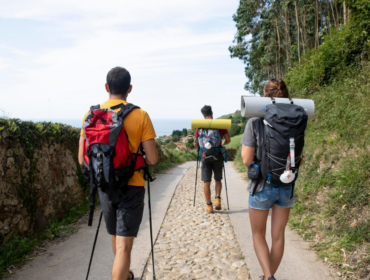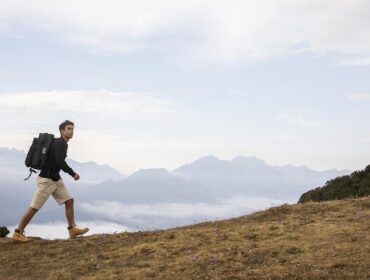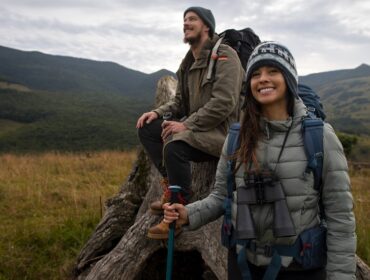Choosing the right child carrier for outdoor adventures is about gear as well as about comfort, safety, and making memories that stick. Whether you’re strolling a flat trail or tackling switchbacks with a toddler in tow, your setup matters. A good carrier keeps your little one secure and happy while saving your shoulders from total ruin.
This guide is for parents ready to hit the trail with a baby or toddler, but unsure where to start. With so many options – soft carriers, framed backpacks, and toddler packs, it can get confusing fast. We’re breaking it down with real advice, what features actually matter, and which carriers are worth the money. Because let’s face it: no one wants to hike uphill while their back aches and the baby screams.
Why a Child Carrier Is a Must-Have for Hiking Parents
Not all gear is essential, but a solid child carrier absolutely is if you plan to bring your little one outdoors. It’s not just a backpack with a seat, it’s a support system. The right one balances weight, protects your child from the elements, and gives both of you room to breathe (literally and figuratively).
You’ll find two main types: soft carriers and framed hiking carriers. Soft ones are cozy, great for young infants, and easy to pack. Framed backpacks are built for long hauls, rugged terrain, and toddlers who like to look around. Each has its place depending on your child’s age, the trail difficulty, and how far you plan to hike.

Baby Hiking Backpacks: Built for the Long Haul
Framed baby hiking backpacks are designed for longer outings. They shift the child’s weight onto your hips, not your shoulders, which makes a huge difference on steep terrain. Brands like Deuter, Kelty, and Osprey specialize in creating ergonomic systems that feel like extensions of your body.
Look for features like an adjustable harness, a padded cockpit for your child, sun and rain protection, and multiple storage compartments. Some models also include stirrups for your child’s feet and built-in hydration sleeves for your water bladder. These packs are not cheap, but you’ll feel the difference after mile two. Especially when your baby falls asleep in it like it’s a luxury recliner.
Toddler Hiking Backpacks: Gear for Independent Explorers
Once your child is walking confidently and wants to carry their own stuff (or at least pretend to), a toddler hiking backpack becomes a fun addition. These aren’t designed to carry toddlers—they’re built for toddlers to carry. Think snack storage, water bottles, a favorite toy, maybe a small jacket.
Some models come with a removable leash or tether for added safety on crowded trails or uneven terrain. The packs themselves are lightweight and simple, often with easy zippers and chest clips to keep straps in place. Look for padded shoulder straps and breathable mesh if you’re hiking in warmer climates.
It’s more than just function. Giving your child a backpack makes them feel involved. It also encourages them to take ownership over their little hiking essentials—just don’t expect them to carry anything heavy.

Opt for short, scenic routes with gentle inclines and fun features like bridges, streams, or wildlife.
Hiking Baby Backpack vs. Soft Carrier: Which One Is Right?
Here’s the big question a lot of parents face: should I go with a structured hiking baby backpack or a soft front carrier? The answer depends on your child’s age and the kind of hikes you’re planning.
Soft carriers are ideal for babies under six months or short, easy walks. They keep your child close, are easier to store, and don’t require much adjusting. But they lack airflow and don’t distribute weight as evenly as framed packs. Your back will feel that difference fast on longer treks.
Framed carriers offer better posture support, more visibility for your child, and better comfort for you. They tend to have storage space, kickstands, and weather protection built in. The only downside? They’re bulkier. But if you’re heading off pavement, they’re worth the space.
Backpack Infant Carriers: Safety Starts Here
If you’re shopping for a backpack infant carrier, make sure your baby meets the requirements. Most carriers are rated for babies who can sit up on their own, usually around 6–9 months. Using one too early can strain their neck or back.
Safety features to look for include five-point harnesses, firm back support, and wide leg holes to avoid circulation issues. Adjustable stirrups, sunshades, and a lockable kickstand also add comfort and stability. And don’t skip the test runs. Wear it around the house or on a neighborhood walk to see how it handles with your child in place.
A good infant backpack should feel balanced on your body. You shouldn’t have to lean forward or constantly shift your weight. The ride should feel smooth—for both of you.
Top Choice for Child Carriers
Ready to buy? Let’s make sure you get a child carrier that holds up on real trails—not just in online photos.
FAQs
When should I start using a child carrier for hiking?
Most framed carriers are safe once your baby can sit up well—typically around 6–9 months old.
How long can a baby stay in a hiking carrier?
Limit each session to 1–2 hours. Take breaks to stretch, hydrate, and check on your baby’s comfort.
Are soft carriers okay for hiking?
Yes—for shorter hikes and young infants. For longer distances, framed carriers provide better support and airflow.
What’s the best child carrier for back support?
Look for framed packs with padded hip belts and lumbar support. Osprey and Deuter do this well.
Can toddlers use a child carrier too?
Yes, up to 40–48 pounds depending on the model. Just make sure the seat is properly adjusted for their height and weight.








